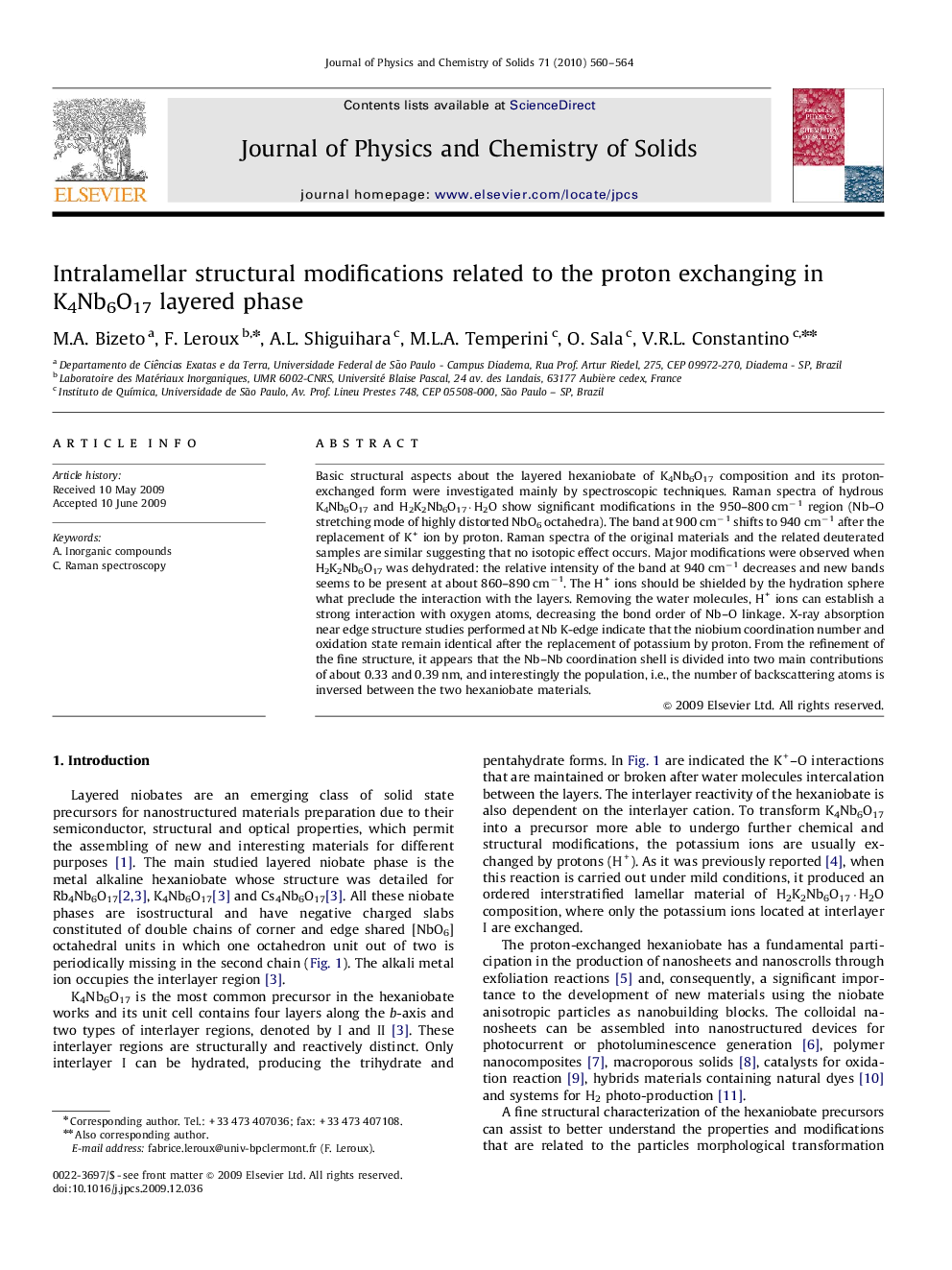| Article ID | Journal | Published Year | Pages | File Type |
|---|---|---|---|---|
| 1517301 | Journal of Physics and Chemistry of Solids | 2010 | 5 Pages |
Basic structural aspects about the layered hexaniobate of K4Nb6O17 composition and its proton-exchanged form were investigated mainly by spectroscopic techniques. Raman spectra of hydrous K4Nb6O17 and H2K2Nb6O17·H2O show significant modifications in the 950–800 cm−1 region (Nb–O stretching mode of highly distorted NbO6 octahedra). The band at 900 cm−1 shifts to 940 cm−1 after the replacement of K+ ion by proton. Raman spectra of the original materials and the related deuterated samples are similar suggesting that no isotopic effect occurs. Major modifications were observed when H2K2Nb6O17 was dehydrated: the relative intensity of the band at 940 cm−1 decreases and new bands seems to be present at about 860–890 cm−1. The H+ ions should be shielded by the hydration sphere what preclude the interaction with the layers. Removing the water molecules, H+ ions can establish a strong interaction with oxygen atoms, decreasing the bond order of Nb–O linkage. X-ray absorption near edge structure studies performed at Nb K-edge indicate that the niobium coordination number and oxidation state remain identical after the replacement of potassium by proton. From the refinement of the fine structure, it appears that the Nb–Nb coordination shell is divided into two main contributions of about 0.33 and 0.39 nm, and interestingly the population, i.e., the number of backscattering atoms is inversed between the two hexaniobate materials.
